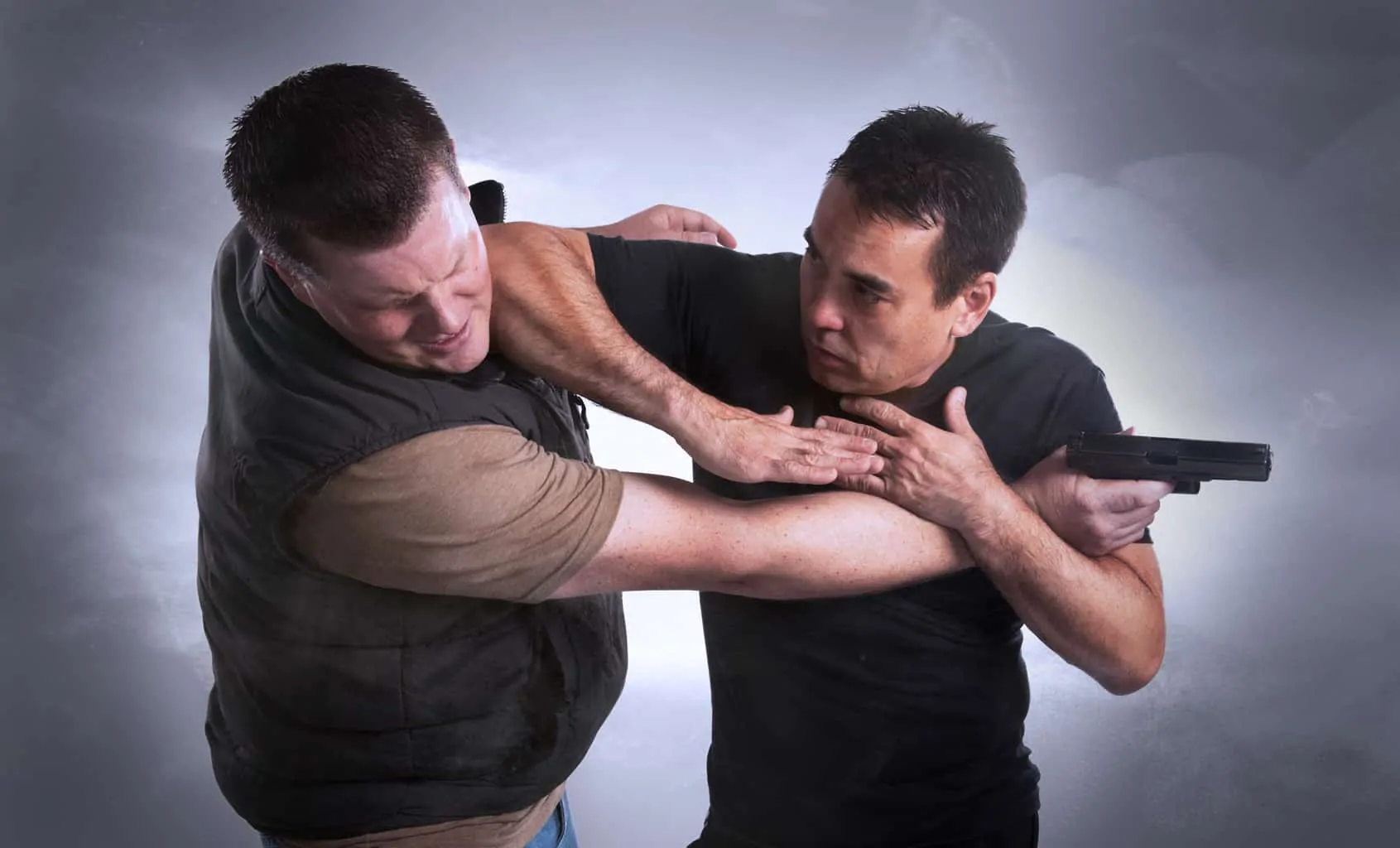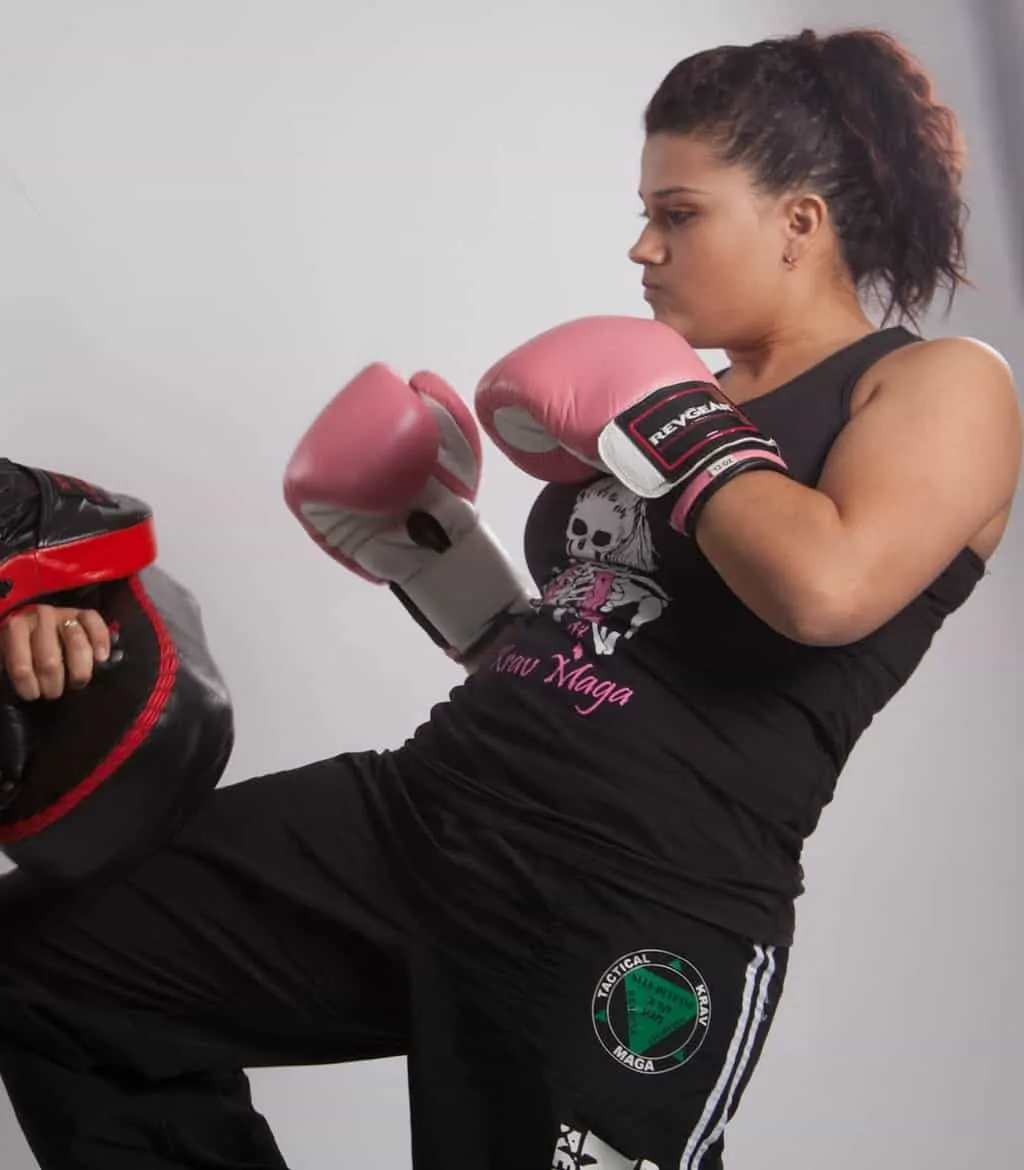
The Top 5 Common Sense Self Defense Techniques everyone should know…and why.
We all get scared. It’s a survival response, and an important one. Being frightened can heighten our awareness, quicken our response time, and deliver extra strength and energy for the fight or flight from danger. But it can also cause us to freeze, mostly due to indecision. Not knowing what action to take can be paralyzing. Luckily, we’ve got that handled for you.
We have a saying here at Colorado Krav Maga, “Be Prepared not Paranoid”. It’s not OK to go through life worried and fearful; you miss out on too many of life’s wonderful moments. But on the other hand, burying your head in the sand and pretending it never happens, or could never happen to you, is just as unhealthy. I assure you none of the recent victims of random violence and home invasions thought it would happen to them.
Being at least somewhat prepared to handle a situation if it should arise just makes sense. You don’t have to go around worrying about it, but you’ll be more aware of the potential when you see it developing, and thus be better able to avoid it. Right along with that comes a peace of mind that only confidence in your ability to defend yourself and your loved ones can bring. Knowing you’re prepared is, in itself, quite peaceful.
Violence and assaults are on the rise. Everyone has a theory as to why, but one thing almost everyone agrees on is that the increased frequency and intensity of attacks is alarming. Everyone should take steps to protect themselves and loved ones, and part of that preparation should be a good REALISTIC self-defense training class. No one can learn and be good simply by attending a few hours long seminar, but it can be a good foundation. Likewise, there are no ‘magic’ martial arts techniques that work against all attackers. What does beat violence? The best way to beat violence is to not be there when it happens, having the foresight and awareness to avoid dangerous situations to begin with, or to get away from one, is a solid strategy. If that fails, then the only thing that really stops violence is more violence.
Here is a list of very simple yet effective things you should practice for self-defense, the first two are more ‘situational’ and ‘awareness’ based:
- Escape and Evade. Running, defensive driving, barricading….all of these things are good tools to practice and map out before you have to. If you have an escape plan, and you practice it, you’ll be more likely to effectively deploy it if you ever need to. Try to get away from violence if you can do so safely without raising your risk, putting yourself in a worse situation, or giving up an advantage. If you have kids or loved ones that rely on you, you’ll have to plan these things out with them carefully. But don’t expect them to be able to react with you…you may have to abandon the plan and stand your ground to protect loved ones.
- Improvised Weapons in your environment. Every room, every vehicle, every bag or backpack has some kind of improvised
 weapon that can be accessed. Take time to identify ones that are in your immediate vicinity in the places you are most frequently or passing through. But remember, simply knowing where they are isn’t enough, you have to measure how long it takes to get to it under stress, then practice getting it and using it. Some examples in a room might be a pen, a lamp, statues or sculptures, solid framed pictures, even your remote control for the TV. Be sure you also know the drawbacks of each, such as a lamp or a computer keyboard that must be unplugged before swinging it.
weapon that can be accessed. Take time to identify ones that are in your immediate vicinity in the places you are most frequently or passing through. But remember, simply knowing where they are isn’t enough, you have to measure how long it takes to get to it under stress, then practice getting it and using it. Some examples in a room might be a pen, a lamp, statues or sculptures, solid framed pictures, even your remote control for the TV. Be sure you also know the drawbacks of each, such as a lamp or a computer keyboard that must be unplugged before swinging it.
Now, the next three tips are up close and personal for when it hits the fan and gets physical. They take very little time to deploy but must be practiced to be effective…these are your own personal impact weapons….the top 3 are:
- Hammer-Fist strikes. These strikes are the most versatile of all strikes. Hammer-fist strikes are utilized by striking with the bottom of the fist (pinky side) and deploying it like swinging a hammer. They work from medium range to short range, and can be thrown in any direction and from almost any position that your arms are free, such as sitting down, lying on your back, kneeling, etc. Spend a lot of time trying these out at different angles and from different positions. Do your best to get as much body weight behind the strikes as possible.
- Elbow strikes. Elbow strikes are almost as versatile as hammer-fist strikes, but with a shortened range. What they lack in range is
 made up for in impact. Elbow strikes are solid bone strikes, can do a lot of damage, and are both quick and hard to spot in the range they are useful. For crushingly powerful strikes, use the bones about 1” in front or behind the actual point of the elbow (depending on the striking angle). This will prevent injury to your actual elbow joint, and deliver devastating blows to the target. Like before, try to get your body weight behind each strike, with elbows that often means rotating your hips a lot. Another great thing about elbow strikes is that you can often train them in conjunction with Hammer-Fist strikes. On many of the angles, you can think of Hammer strikes as extended elbow strikes. Hammer strikes for medium range and elbows for short range. This DRASTICALLY reduces training time.
made up for in impact. Elbow strikes are solid bone strikes, can do a lot of damage, and are both quick and hard to spot in the range they are useful. For crushingly powerful strikes, use the bones about 1” in front or behind the actual point of the elbow (depending on the striking angle). This will prevent injury to your actual elbow joint, and deliver devastating blows to the target. Like before, try to get your body weight behind each strike, with elbows that often means rotating your hips a lot. Another great thing about elbow strikes is that you can often train them in conjunction with Hammer-Fist strikes. On many of the angles, you can think of Hammer strikes as extended elbow strikes. Hammer strikes for medium range and elbows for short range. This DRASTICALLY reduces training time. - Knee strikes. No self-respecting self-defense system is complete without knee strikes. Another bone crushing medium/close
 ranged weapon, knee strikes can be as devastating as elbow strikes. Your legs are very powerful, and using your hips to back up this strike adds an immense amount of impact per square inch. Although usually thought of as targeting the groin, there are many targets for the knee strike; the leg, side of the leg, side of the knee, gut, or even the face and head if they’re bent over or your positioning happens to have you both on the ground. Even an accidental knee to the head can end an altercation instantly. The caveat here is that you need to train carefully on when to use them. Its ill advised to lift a leg off the ground when someone is pushing, pulling, or spinning you. You need BOTH feet on the ground for balance! Ultimately, you’ll be able to use the extension of the knee strike, a kick, with very little additional practice if you’ve trained on the knee strike properly.
ranged weapon, knee strikes can be as devastating as elbow strikes. Your legs are very powerful, and using your hips to back up this strike adds an immense amount of impact per square inch. Although usually thought of as targeting the groin, there are many targets for the knee strike; the leg, side of the leg, side of the knee, gut, or even the face and head if they’re bent over or your positioning happens to have you both on the ground. Even an accidental knee to the head can end an altercation instantly. The caveat here is that you need to train carefully on when to use them. Its ill advised to lift a leg off the ground when someone is pushing, pulling, or spinning you. You need BOTH feet on the ground for balance! Ultimately, you’ll be able to use the extension of the knee strike, a kick, with very little additional practice if you’ve trained on the knee strike properly.
If you’re thinking to yourself “Yes, but these are common sense!” then we’ve done our job with this article. Yes they are common sense, but not commonly practiced and fewer still practice correctly. If you were hoping for a description of an amazing ancient Chinese pressure point technique that will ‘destroy any opponent in seconds’…then unfortunately you’ve been bamboozled by myth and by marketing. Real violence is chaotic, explosive, graphic, and, as the Supreme Courts put it, “…tense, uncertain, and rapidly evolving”. (Graham vs. Connor) That’s how you MUST practice these techniques, under stress, when things are uncertain and changing constantly. It’s not enough to practice these in a vacuum.
In the flurry of the assault, often Occam’s Razor often applies. Although the simplest answer might not ultimately be the best answer, it is usually the best answer in the moment, and a way to get ahead of the incident and buy yourself time to come up with more enlightened and focused solutions. Remember this quote; “Indecision costs more than a bad decision”
With limited training time to dedicate to preparing for such an event, make the most of what you have and focus on the basic 5. Find a gym with a heavy bag for the strikes. Better yet, find a training partner. Add 20 minutes of these to your normal workout routine (it’s good cardio) twice a week and you’re well on your way to being prepared. Remember to put your mind and body under stress when practicing. Have a friend move the pad around, safely of course, while you’re trying to hit it. Run sprints before unloading a barrage of elbow strikes…anything to mimic the physiological effects of stress, fear, and the fight. Specialized self-defense training centers like Colorado Krav Maga are well equipped to help you with this, and are in fact designed for this very purpose.
For more helpful information and training, check out the Amazon #1 best seller “How to Be a Super Hero; How to recognize, avoid, and survive violent encounters and getting shot” by Colorado Krav Maga CEO James Hiromasa.
BONUS: As a FREE bonus for reading our report, check out this video lesson on Defending Against a Knife Attack
Get Started NOW!

